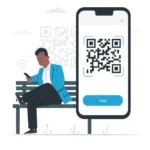Efficient operations within any organization rely on the punctuality and consistent work habits of its employees, with employee attendance tracking playing a significant role. To have regular work attendance, it becomes imperative to establish guidelines that are adhered to across the organization. These guidelines can be formalized within an attendance policy.
The consequences of operating without an attendance policy are many. To begin with, occasional instances of absence or lateness might be easily overlooked, but their cumulative impact is significant.
According to research findings, unscheduled absenteeism results in an annual cost of around $2,660 for salaried employees and approximately $3,600 per year for those paid hourly. These costs associated with absenteeism extend beyond financial implications. They encompass reduced productivity, diminished service quality, and a range of safety concerns.

Furthermore, managers find themselves investing additional time in addressing disciplinary issues and managing shifts to ensure coverage. Simultaneously, the morale of other team members could suffer as they are required to fill in for their absent colleagues.
The work attendance policy also highlights employee productivity on an individual basis. It specifies the designated start and end times for an employee’s workday. You can also see the duration worked, thereby giving transparency into their productivity levels.
If you’re still relying on a manual attendance tracking system or managing time off through spreadsheets, you are due for an upgrade. Transitioning to software attendance tracking can eliminate the chances of human errors and streamline the entire attendance procedure. By minimizing administrative tasks, you’ll reclaim valuable hours in your week that can be redirected toward other aspects of your business growth.
Challenges of Employee Attendance Tracking
Marking and recording attendance poses significant challenges, primarily due to the necessity of maintaining accurate data records. This accuracy is important, as various other operations rely on it, including task tracking and payroll processing.
Time-intensive Process: Field-based employees frequently express dissatisfaction with the additional time and effort required to commute to the office every day solely to record their attendance. This situation detrimentally affects both their efficiency and output.
Buddy Punching: Among field employees, the practice of buddy punching is prevalent, especially when they are running late or absent while on assignment. This results in significant inaccuracies in data records, causing higher costs to businesses.
Early Arrival and Departure of Employees: Given that field employees operate remotely, managers lack insight into their actual work hours, including instances of arriving early or leaving early.
Regular Employee Breaks: Field staff often tend to take excessive breaks during work due to the absence of constant supervision. Extended lunch breaks and longer travel duration are common due to a lack of monitoring.
Your attendance policy can address all these challenges. A well-drafted employee attendance policy can help you achieve:
- Punctuality with clearly defined expected arrival and departure times at work.
- Ease of tasks scheduling protocols for reporting absences, time-off, etc.
- Address loopholes in productivity by identifying persistent absenteeism
- Proactive communication from employees to avoid consequences of unreported or unjustified absences.
Steps for Efficient Employee Attendance Tracking
Here are a few simple steps that you can incorporate into your attendance management policy to make the process efficient.
1. Selecting Your Attendance Tracking App
Your employee attendance app should encompass solutions to fundamental queries:
- How will employees officially log their punctual attendance?
- Which methods will you employ to oversee employee attendance?
- What mechanisms ensure the accuracy of recorded time?
Various companies adopt diverse approaches to capture employee attendance. Some rely on security personnel to document attendance, while others utilize time cards enabling employees to clock in clock out of shifts.
Yet, all these methods are prone to human errors. Minor oversights like forgetting to clock in or instances of time theft such as buddy punching can result in financial losses for your organization. The ramifications go beyond mere monetary impact, potentially reducing employee morale and compromising your company’s reputation.
The most dependable method of tracking attendance is by using an attendance tracker app. This solution seamlessly integrates GPS tracking and geofence technology thereby removing the need for manual inputs and mitigating buddy punching and remote clock-ins.
This solution proves particularly beneficial for managers and team leaders overseeing groups stationed in various locations, such as home healthcare providers and construction personnel.
Empowered by GPS-enabled tracking, the attendance app gathers precise data and gives real-time insights into employee productivity.
2. Ensure your legal compliance
To avoid legal trouble with the Equal Employment Opportunity Commission, you need to be careful about following the rules for how you treat your employees.
When you draft guidelines about employees being allowed to take time off for medical reasons, you can refer to the Family and Medical Leave Act (FMLA). This will help you figure out which employees can take up to 12 weeks off for health reasons and still keep their jobs.
Also, remember to comply with laws like the Americans with Disabilities Act (ADA) from the federal government when you make rules about attendance. And different states may have different laws too in regards to attendance.
One important thing is making sure you pay your employees correctly. This requires compensating them fairly for the hours worked to avoid violating the Fair Labor Standards Act.
To avoid any errors in billing processes, you must rely on technology. If you choose the right software for tracking attendance, you can seamlessly integrate your billing and attendance.
Simple time-tracking tools can’t handle the complex job costing and payroll needs of medium-sized and big businesses. Here’s why that matters:
Accurate Tracking: If time tracking isn’t precise, the payroll team has to spend a lot of time fixing mistakes in employee time sheets.
Automatic Syncing: The tracking system works together with the payroll system. This means that employee work hours and mileage costs get added up without people needing to do it by hand.
Smart Rules: Businesses can make special rules for paying employees based on their different job roles or tasks. This makes the payroll process quicker and simpler.
3. Customization and communication
Your business is unique and there is no ‘one size fits all’ when it comes to attendance policies. Whatever time & attendance app you adopt for your business, it should be able to consider the different requirements of your work.
Here are a few ways in which your business can customize attendance policy-
Check-In Boundary: Workers can only clock in when they’re very close to the job site, for instance, within 100 yards.
Driver Rest Requirement: Drivers are only allowed to start driving after they’ve been offline for 8 hours, which is a rule from the Department of Transportation.
Minimum Job Site Time: Employees have to be at the work location for at least 30 minutes before they’re allowed to clock out.
Break and Lunch Reminders: Based on the rules of the State, employees need to be reminded to take regular breaks and lunchtime.
No matter what your requirements are, you can ensure that employees never miss a clock in or out with intelligent reminders linked to their work schedule. These include situations like forgetting to clock in or when the app is inactive.
Additionally, you will also receive alerts for delayed check-ins or early departures from the workplace, with the flexibility of two-way notifications—managers and employees can be reached via email, text, or phone calls.
Conclusion
Having a good policy for attendance tracking is important for dealing with major challenges like absenteeism, time theft, and lateness. However, it’s crucial to do this while being considerate of your employees’ rights to paid leaves and working conditions. This kind of policy can create a positive workplace culture which leads to employee satisfaction and reduces the expensive problem of employee churn.
With time, attendance policies have become more efficient. Businesses are now spending money on solutions that not only show where employees are but also gather attendance info that can be quickly shared with managers and others.
Although traditional ways of recording attendance worked for a while, it is important to adopt digital methods now to be flexible for growth in the coming years. Try out a 14-day free trial to understand how a digital attendance tracking system fits into your business.


